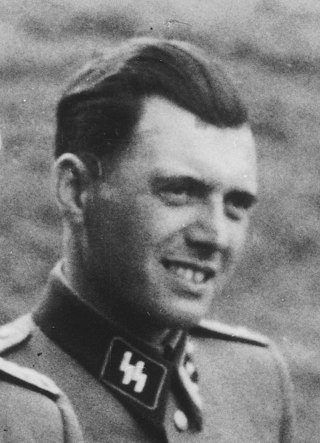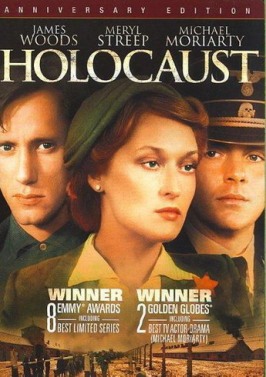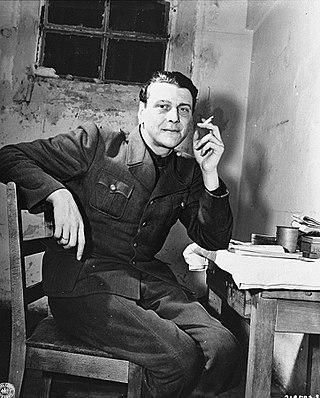Plot
The story begins when a Belgian journalist, Hugo van Eyck (Jerome Willis), broadcasts a documentary about Nazi war criminals, and investigates the whereabouts of the former Chief of Gestapo and SS of Belgium, Standartenführer Kessler (who had been promoted from Sturmbannführer during the final series of preceding drama Secret Army , set during the war, over 30 years before). Van Eyck has a very high media profile in Belgium and soon develops an investigation into Kessler (Clifford Rose) with the help of West German intelligence officer Richard Bauer (Alan Dobie).
Kessler has changed his name to Manfred Dorf and is now a rich industrialist, with factories manufacturing plastics, explosives, and pharmaceutical products. His wartime Belgian mistress Madeleine Duclos (Hazel McBride) is deceased, but after the war the couple married and had a daughter, Ingrid (Alison Glennie). Kessler is part of an organisation called the Kameradenwerk , made up of Nazis on the run, trying to evade trial for their war crimes, led by Kessler's close friend Colonel Hans Ruckert (Ralph Michael), a character based on Luftwaffe ace Colonel Hans Rudel.
It is essential to the drama that the Kameradenwerk are not merely passive, intermittently stalked figures. They loosely resemble an aged Fourth Reich, compelled with the idea of an anticipated ascendancy of the German state and Volk, a foreseen future referred to as 'Der Tag' (literally 'The Day'). Mostly made up of aging, World War II Nazi veterans, the organisation is apparently large, endowed and very dangerous in the drama to those who cross them or who try to make their existence known publicly. The potential of The Kamaradenwerk can seem formidable and frightening.
The Kameradenwerk is active in Germany and Europe, keeping a huge sum of Nazi loot funds, furthered by the financial successes of Kessler. The secret, highly regimented organisation is based in countries throughout Latin America, headed by actual, named war criminals from the Second World War, who in the drama are of higher rank than Standartenführer Kessler. This important element of the plot echoes a reality of postwar Nazis who fled Europe through The Ratlines to the continent. Kessler, or Dorf, whilst he is lower down in the organisation, does however hold joint control with the Kamaradenwerk leader of the vast organisation funds.
Ingrid is sleeping with her father's manservant, Franz Hoss (Nicholas Young), and they are part of a group of young Neo-Nazis who dream of leading Germany back to Nazism.
In Brussels, van Eyck invites three of the prominent Lifeline (a Second World War Escape Line) partners, who were Secret Army series characters, to his television studios: Albert Foiret (Bernard Hepton), Monique Durnford (née Duchamps) (Angela Richards), and Natalie Chantrens (Juliet Hammond-Hill). Some of the serial's first scenes take place outside the Restaurant Candide in the Grand-Place in Brussels. The trio reminisce about their wartime activities running the resistance organisation Lifeline.
Monique and Natalie are certain that Dorf is Kessler, but Albert claims to be less sure, seemingly unconvinced of the purpose in awakening decades-old sleeping dogs.
Van Eyck and Bauer meet a young Israeli woman soldier called Mical Rak (Nitza Saul). Mical's mother's family was sent to Dachau to be killed, on Kessler's orders.
Mical breaks into the grounds of Kessler's home to see him, but is discovered and forced to flee. The Kameradenwerk discover where she is staying and very soon murder her companion Ruth Lieberman (Ishia Bennison). Abruptly, media celebrity Van Eyck becomes their next victim as Mical's visit has threatened Kessler and the Kameradenwerk. They fear she works for either the Israeli state or Nazi hunting groups. It is agreed Kessler should leave, going first to the countryside (where Mical follows equipped with a gun) and then to London for a business conference.
When Mical follows to London she is identified and kidnapped from outside Kessler's London hotel and beaten by Franz, before being thrown into the River Thames. However, she survives and is rescued by the authorities. Mical and Bauer, who is also now in London, team up to target Kessler.
Back on the continent, Bauer's companion intelligence agent in Belgium, Karl Leider (Robert Morris), pays an official visit to Kessler's home while Kessler is away, finding a photo album proving Dorf is indeed Kessler. While he is inside, Kameradenwerk agents interfere with Agent Leider's car. They follow him on the road when he leaves and subsequently murder him on a quiet stretch of road. Just before, Agent Leider had stopped for fuel at a station and used a postbox there.
When the interference is realised and it is known the incriminating photo album was seen, Kessler, Ruckert, Franz, and Ingrid travel to Paraguay, and Bauer and Mical set off in pursuit. After a brief detour in Buenos Aires, the pair arrive in Ascunsion, Paraguay.
Kessler and Ruckert stay with a Nazi-sympathizing Paraguayan aristocrat, Don Julian Yqueras (played by Guy Rolfe, who previously appeared in the Secret Army episode, "Russian Roulette" as Oberst von Elmendorf). Yqueras is partly based on the former President of Argentina Juan Peron, a Nazi sympathizer who welcomed war criminals into his country and prevented their extradition, and partly on Paraguayan President Alfredo Stroessner - still in power in 1981 - who also allowed his country to become a safe haven for Nazi war criminals. Mical and Bauer stay with pigeon-fancier Jose Garriga (John Moreno), who quickly charms them and wins their friendship.
Ingrid and Franz meet fellow Nazis and discuss a plan to convince Kessler to take over their group and to bring with him a fund of 48 billion Deutschmarks, to be used to support the exiled Nazis. Kessler and Ruckert also meet their comrades, under the command of Martin Bormann, who does not appear on screen, apart from one arm. At the same meeting, Kessler is repulsed to be introduced to Josef Mengele (Oscar Quitak), Auschwitz's "Angel of Death". (In real life, it has been mostly accepted Bormann had died in 1945, but this was not revealed until 1998. Similarly, it is understood Mengele had died in 1979 under the assumed name Wolfgang Gerhard, but this did not come to light until 1985.)
Kessler realizes that the Kameradenwerk are just too old and too tired to lead Germany back to Nazism. They care much about their own safety, little about building a new Nazi regime in Germany. After much soul-searching, Kessler decides to turn his back on them and turns instead to the young Nazis, agreeing to give them the Nazi fortune.
Deciding that Mical has become too much of a threat, Ruckert orders his followers to kill her. Unaware of that order for Mical's murder, Ingrid and Franz go after her for the same reason. After killing Garriga, the assassins mistake Ingrid for Mical and Franz for Garriga and shoot both dead, thereby killing the only people who could have resurrected Nazism in the drama.
Mical and Bauer find their bodies and proceed to blow up the Nazi convoys, but Ruckert escapes. Mical and Bauer corner Kessler. After a discussion about the Holocaust and Communism, Bauer informs Kessler of Ingrid's death.
Mical tries to execute Kessler by shooting him in the back of the head but finds that she cannot do it. Mical and Bauer leave him alone, Bauer deliberately leaving his machine gun behind. Realizing that his dream of a new Nazi dawn is over, and having lost the one thing (their daughter Ingrid) that he had left of Madeleine, Kessler shoots himself in the mouth using Bauer's machine gun. Mical and Bauer return to find Kessler dead and draped in the Nazi Flag. Mical and Bauer finally leave knowing that the Nazis will never now get their hands on the billions, the virtual end of the Kamaradenwerk denoting in the drama the Nazis will never be able to return to power.












